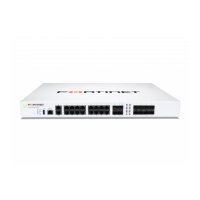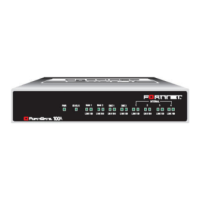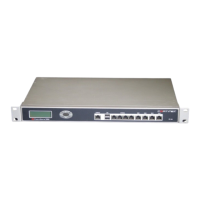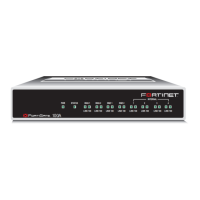286 01-28006-0010-20041105 Fortinet Inc.
Authenticating peers with preshared keys VPN
Authenticating peers with preshared keys
If both VPN peers can use the same preshared key to authenticate themselves to
each other, you can enter the preshared key at each peer.
To configure an AutoIKE VPN with preshared keys
1 Add a phase 1 configuration to define the parameters used to authenticate the remote
VPN peer.
Although the remote VPN peer can be either a client or a gateway, this step is often
referred to as “adding a remote gateway.”
For a preshared key VPN, set authentication method to Preshared key.
2 Set other phase 1 options as required.
See “Phase 1” on page 254.
3 Add the phase 2 configuration to define the parameters used to create and maintain
the AutoKey VPN tunnel.
This step is often referred to as “adding a tunnel.” See “Phase 2” on page 258.
4 Add the firewall configuration required for the VPN.
See “Adding firewall policies for IPSec VPN tunnels” on page 288.
Gateway-to-gateway VPN
Using a peer to peer VPN, users on a network behind a VPN gateway can connect to
another remote network behind a remote VPN gateway. Both VPN gateways or peers
are FortiGate units or other VPN gateways with static IP addresses.
To configure a gateway-to-gateway VPN
1 Add a phase 1 configuration to define the parameters used to authenticate the remote
VPN peer.
2 Set Remote Gateway to static.
3 Set other phase 1 options as required.
See “Phase 1” on page 254.
4 Add the phase 2 configuration to define the parameters used to create and maintain
the AutoKey VPN tunnel.
See “Phase 2” on page 258.
5 Add the firewall configuration required for the VPN.
See “Adding firewall policies for IPSec VPN tunnels” on page 288.
6 Configure remote VPN clients with a matching IPSec VPN configuration.

